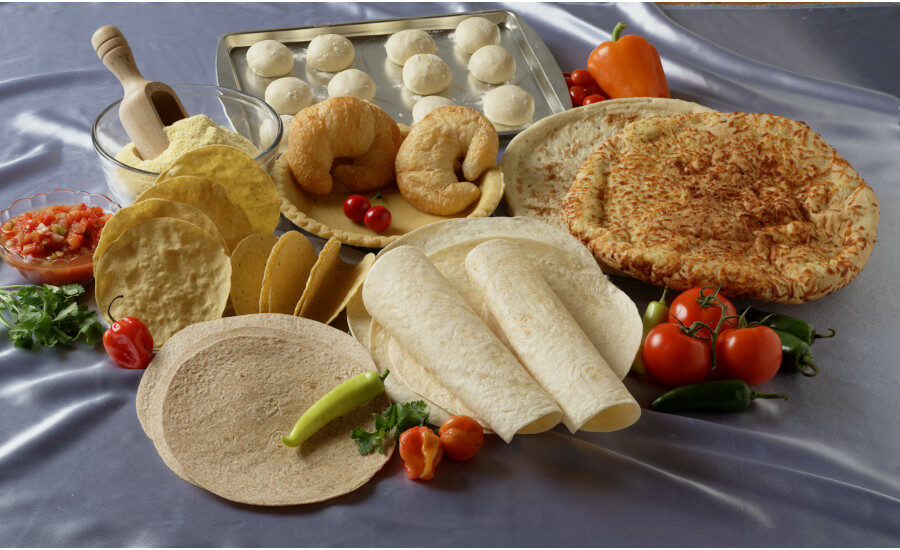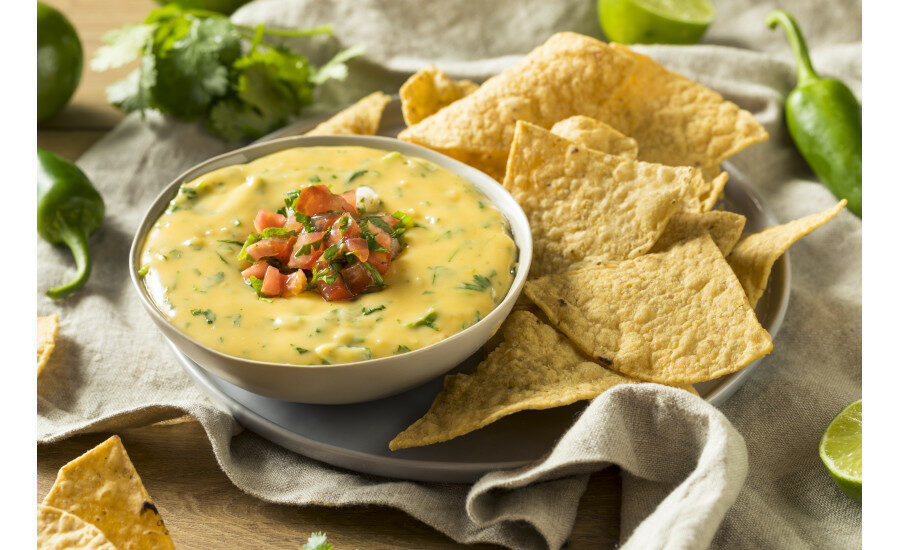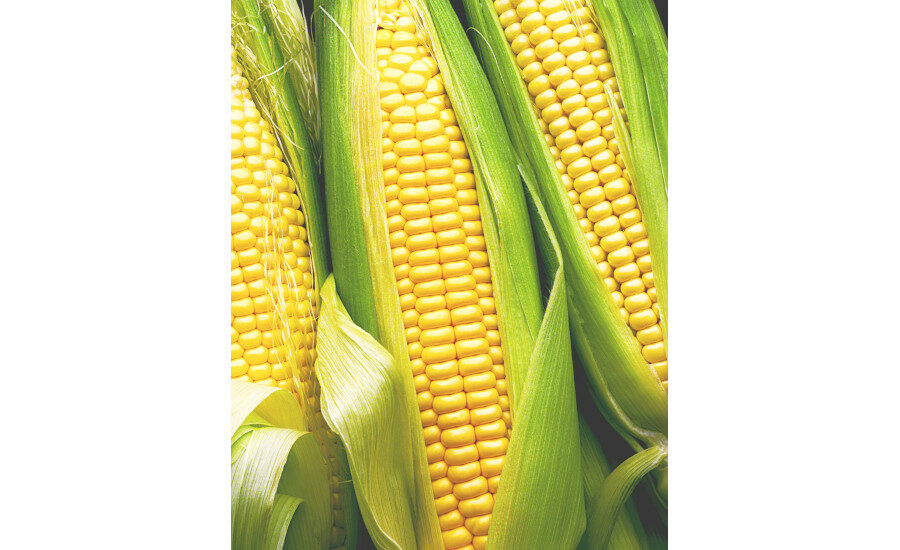Ingredients for better tortillas
Selecting the right fat and oil ingredients for tortilla production can improve quality, shelf life, and eating enjoyment.






Flour tortillas continue to be a growing category within the bakery segment. And the choice of either a liquid oil or solid fat for a tortilla can impact the product eating characteristics and processing factors, says Michelle Peitz, technical solutions and marketing, oilseeds, ADM, Chicago. “Solid fats are usually preferred, as they can provide a more flexible tortilla and are less prone to sticking together throughout the offerings shelf life. At ADM, we use a variety of solutions for tortilla shortenings including interesterified soybean oil, a tried and true industry shortening for tortillas, as well as blended solutions and palm oil.”
When selecting oils for producing tortilla chips, manufacturers should consider several factors including flavor, cost, and product positioning. “Corn oil is a familiar favorite among consumers, delivering flavor and unsaturated fats as well as excellent frying qualities,” says Peitz. “The inherent stability of corn oil provides exceptional performance in the fryer, as well as in the shelf life of finished products like tortilla chips. As consumers look for more interesting snack foods, we see tortilla chips including various beans in addition to specialty grains like quinoa and amaranth. In these trending snack formulations, a higher-stability oil, such as our high-oleic sunflower oil, is often beneficial to protect the snack’s flavor and shelf life.”
Eric Spangler, principal scientist, Corbion, Lenexa, KS, notes that the fats and oils used in flour tortillas contribute to multiple product features, including texture, flexibility, and anti-stickiness. Selecting the right fat and oil ingredients plays a crucial role in the desired taste of the finished product, product texture, quality, consistency, ease of use, and shelf life.
The United Soybean Board, Chesterfield, MO, is seeing an increased interest in using high-oleic soybean oil as a tortilla frying oil to supplement or replace conventional or high-oleic oils being used in this application. “In addition to a neutral flavor profile that allows your other ingredients to shine and providing oxidative stability, high-oleic soybean oil is also a sustainable, U.S.-grown vegetable oil—benefits that consumers are looking for in many of their products,” explains Dennis Strayer, consultant.
For tortilla production, it is important that the shortening have a consistent, workable texture when it is incorporated into the flour during the manufacturing process. “This consistency in the shortening’s plasticity is essential to ensure the rollability of the tortilla, with less tearing, and a more uniform, softer finished product. A shortening texture that is either too hard or too soft, due to seasonal temperature variations experienced in a bakery, may result in more production issues and inconsistent finished product. A tortilla shortening formulated from interesterified high-oleic and commodity soybean oil has a more consistent texture over a wider temperature range,” notes Strayer.
Larger manufacturers tend to use all-purpose shortenings made of palm oil or interesterified soybean oil. Cargill, Minneapolis, offers Regal All-Purpose shortening for strong shelf life and pliability without the stickiness issues associated with some fat solutions.
In tortilla chips, vegetable oil plays several important roles, impacting flavor, mouthfeel and shelf life. Cargill offers a broad portfolio of edible oils that can be used in tortilla chips including: canola, corn, high-oleic canola and non-GMO high-oleic sunflower.
John Satumba, global bakery technical lead and regional R&D director for North America, Global Edible Oil Solutions, Cargill, notes high-oleic oils are well-suited to tortilla chip applications. “The high oleic levels translate to higher stability, giving these specialty oils a longer fry life and longer finished product shelf life compared to generic canola or soybean oils, while maintaining the desired flavor profile. These oils have very clean flavor profiles, which allows consumers to enjoy the natural, delicious flavor of the chips. Nutritionally, our high-oleic canola and sunflower oils are low in saturated fat (7 percent and 14 percent, respectively) and meet many consumers’ health and wellness goals.”
Andrea Weis, scientist II, AAK USA, Newark, NJ, notes that the role of fats and oils in tortillas is linked to machinability. “During tortilla manufacturing, fats and oils help improve dough machinability by lubricating the matrix and coating the wheat proteins (gluten). Without sufficient lubrication, the tortilla dough would be tacky and difficult to work with on the line. Coating the gluten strands with fats and oils helps to reduce the toughness of the dough, making it easier to shape during the make-up process. After production, the roles of fats and oils continues by providing critical sensory and functional properties to the finished tortillas. Fat improves the eating quality of the flour tortillas by providing a soft and tender texture. The flexibility and rollability of a flour tortilla at any given temperature can also be impacted by the fat system.”
Anita Srivastava, Ph.D., CFS, senior technical service manager, bakery, Kemin, Des Moines, IA, notes that vegetable oils are the most commonly used frying oils for corn chips, however higher stability oils (i.e., high-oleic oils) are also used—especially since the removal of partially hydrogenated oils (PHOs) in foods. “Frying oil helps to provide a better mouthfeel, a crunchy texture, and helps in reducing water activity and improving shelf life. In regards to ingredients used in frying oils, antioxidants are commonly used to help extend the shelf life of the oil itself, as well as possibly in the fried tortilla strips. These antioxidants help to preserve the flavor of the tortilla chip, too.”
Kemin has recently expanded the FORTIUM RVC line. “FORTIUM RVC can help manufacturers significantly delay the onset of lipid oxidation utilizing a blend of rosemary extract and ascorbic acid, in a base such as vegetable oil, to lengthen product shelf life of baking and snack products. Kemin utilizes a proprietary grinding technology to ensure the suspension has small and uniform particles to improve the physical stability of fats/oils in each application,” shares Marie Shen, senior research associate.
Deep frying is the final step in making a tortilla chip and regardless of whether it is made in a restaurant or a manufacturing plant, consumers are looking for the product to deliver the same basic flavor and consistency. “Snack manufacturers produce food products which have a longer route in terms of time from prep to consumption,” says Roger Daniels, vice president research, development, innovation and quality, Stratas Foods LLC, Memphis, TN. “Because of this time element, it is important to utilize an oil or shortening which provides good flavor performance over an extended shelf life. High-oleic oils are more stable than traditional oils like soybean and canola. Restaurants preparing chips are looking for ways to prolong the life of their frying oil. High-oleic oils are more stable than traditional oils like soybean and canola.”
Columbus Vegetable Oils, Des Plaines, IL offers a variety of fat and oil products, such as lard, palm oil shortenings, interesterified shortening, and some shortening products that contain emulsifiers that can be used for making tortillas. “When making tortillas, the texture of the shortening is key and necessary to test thoroughly to ensure that the finished product has the proper texture, mouthfeel, and resting properties (such as to prevent the tortillas from sticking to each other). Many of these products are shortenings (containing hard fats), so beyond looking at the product properties and which is healthy, it is a bit more tricky as there are pros and cons to all of the shortenings,” explains Rick Cummisford, director of quality control.
As for frying tortillas, liquid oils, such as corn oil, mid- or high-oleic sunflower oil, or high-oleic soybean oil, can be used. “These oils perform well in the fryer and may or may not require extra antioxidants and/or antifoam agents for the process, and also to boost the finished product shelf-life stability. As fry medium, the clear oils used will have a direct impact on the shelf life and nutritional aspect of the product,” shares Cummisford.
Looking for a reprint of this article?
From high-res PDFs to custom plaques, order your copy today!








